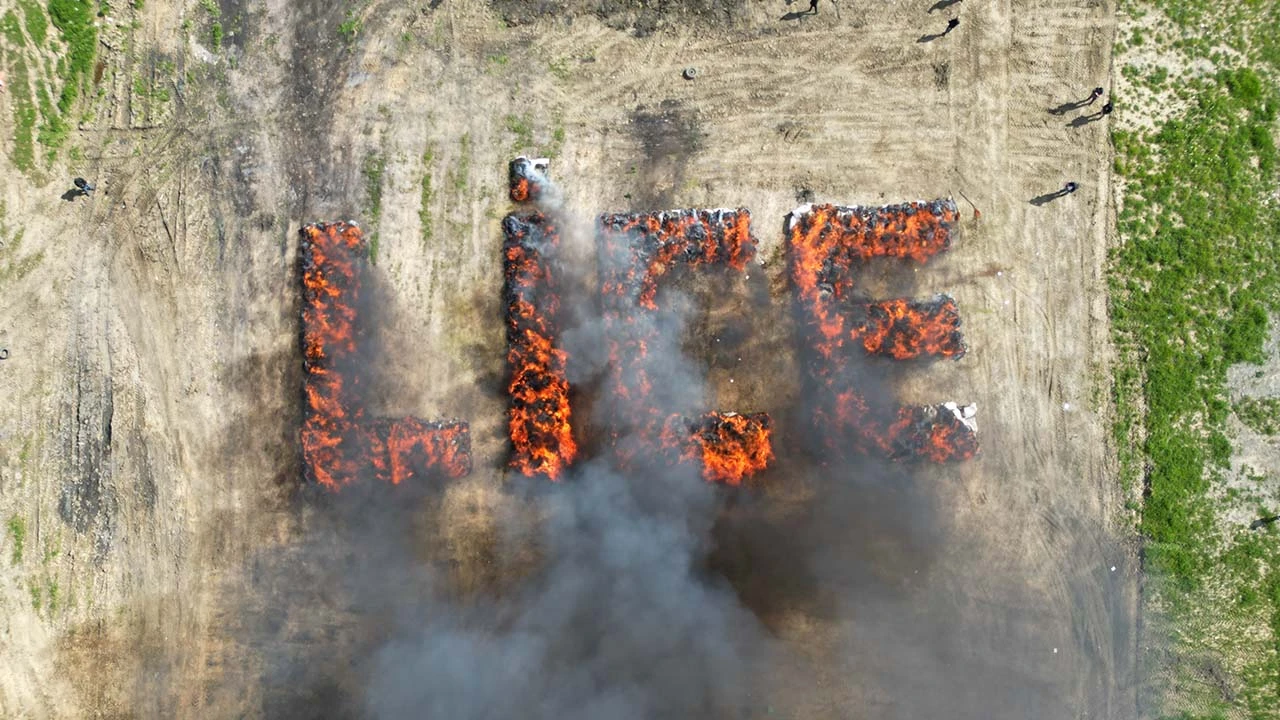Turkish official says too early to rule out seismic risk for Santorini
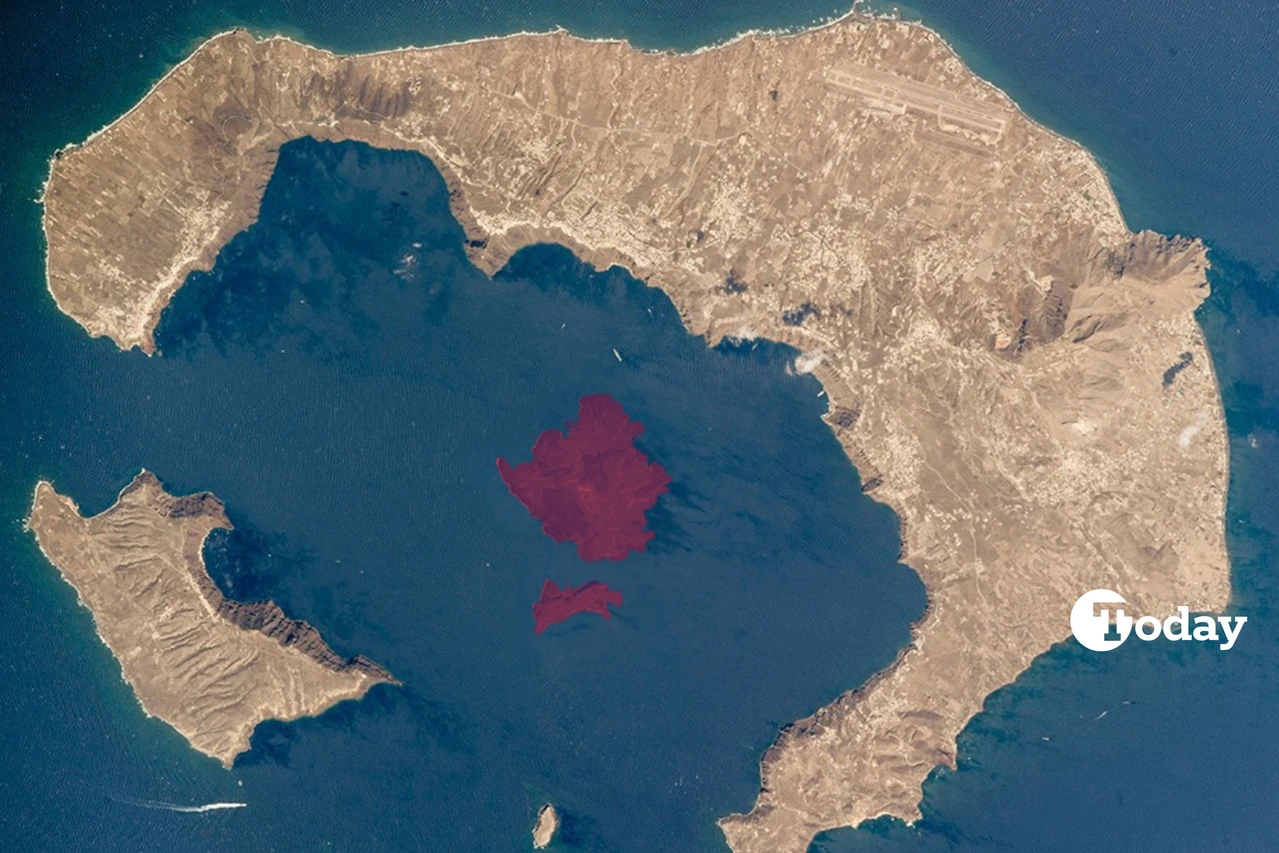 The underwater caldera of the Santorini volcano, photographed from the International Space Station. The central lagoon is surrounded by several islands, including the largest, Santorini. (Photo via NASA; Photo collage by Koray Erdogan/Türkiye Today)
The underwater caldera of the Santorini volcano, photographed from the International Space Station. The central lagoon is surrounded by several islands, including the largest, Santorini. (Photo via NASA; Photo collage by Koray Erdogan/Türkiye Today)
Professor Orhan Tatar, Disaster and Emergency Management Authority’s (AFAD) director of earthquake and risk reduction, provided an update on the ongoing seismic activity in the Aegean Sea near Santorini.
Turkish official Tatar stated, “Right now, the daily number of earthquakes ranges between 60 and 100. While there is indeed a decline, it is still too early to say the risk for Santorini is completely gone.”
Santorini witnessed a 4.1 magnitude earthquake on Wednesday after a relatively calm period in terms of strong seismic activities.
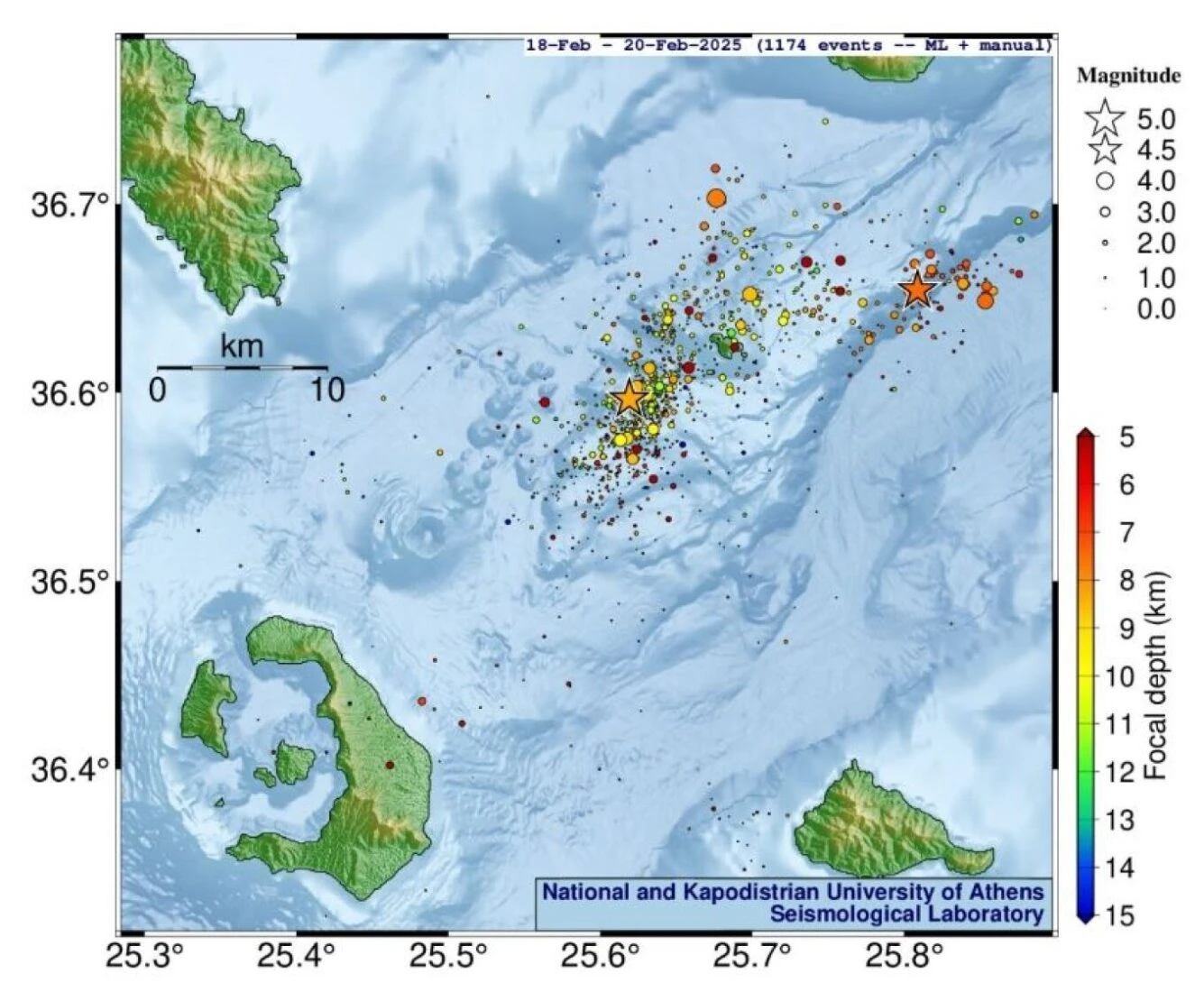
Türkiye is closely monitoring risk for Santorini
Tatar noted that seismic activity in the Aegean began a month ago and continues, adding: “On February 2-3, the number of earthquakes peaked at around 200 per day. Since then, activity has declined, but Türkiye’s AFAD continues to closely monitor the situation.”
AFAD has been conducting risk assessments for potential tsunamis and volcanic eruptions. The Turkish Meteorology Directorate models wind patterns to predict how volcanic ash might spread.
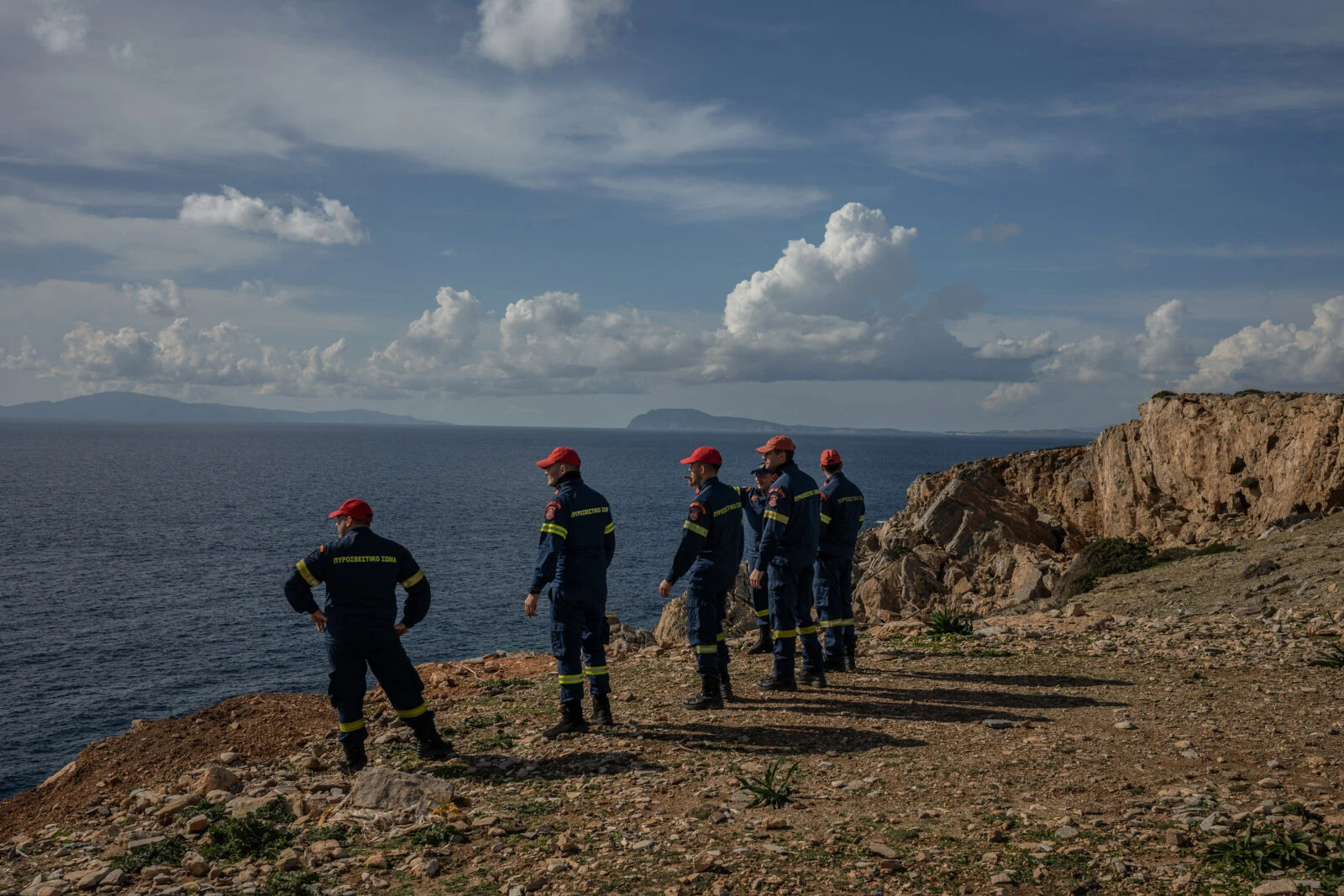
Tsunami scenarios suggest that, in the worst case, a tsunami could reach Turkish shores within an hour but is not expected to cause significant damage.
‘Sea recession does not refer to an upcoming earthquake’
Responding to recent concerns about sea recession, Tatar clarified: “Sea recession is not a sign of an impending earthquake. It is caused by strong northern winds pushing the water back.”
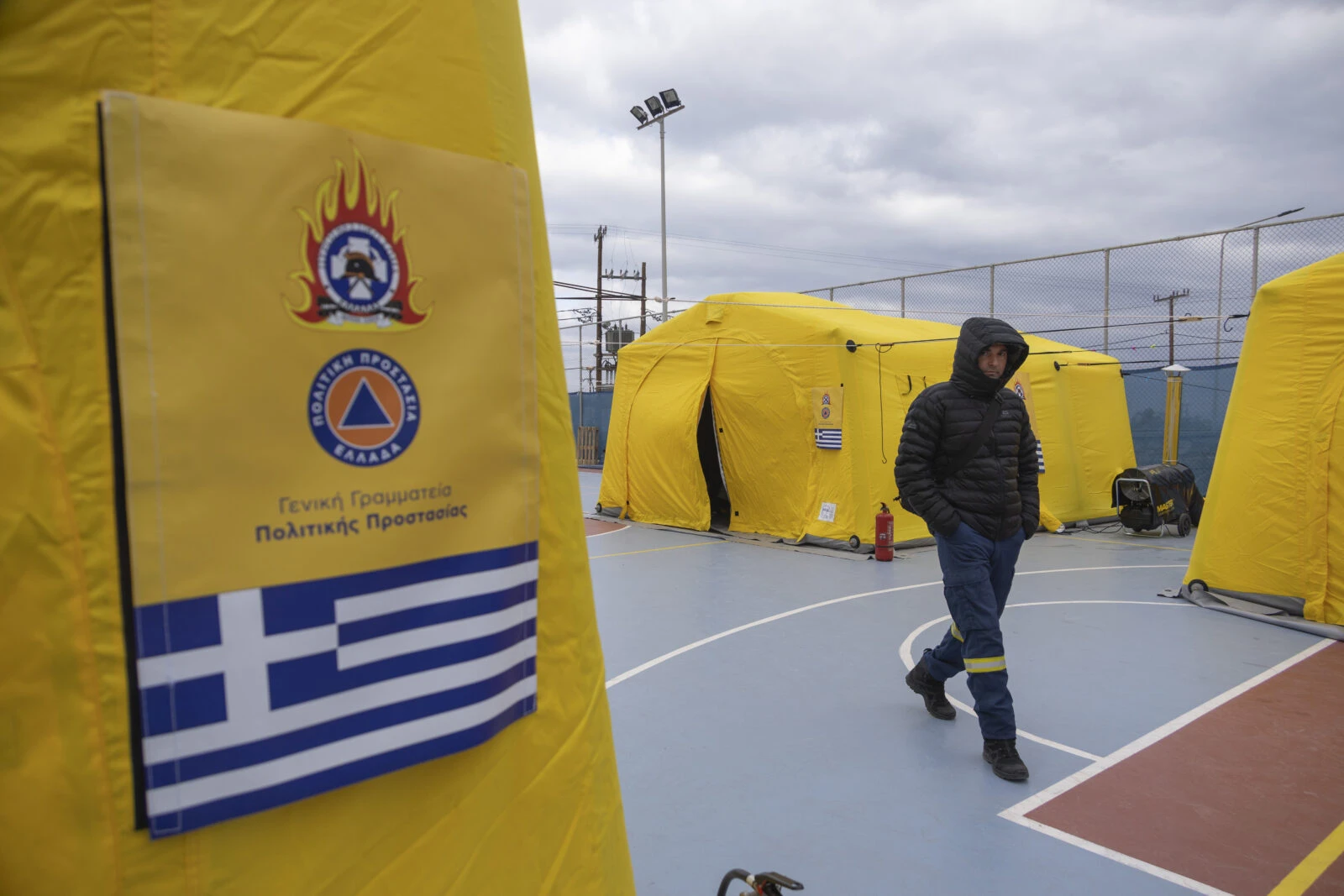
He emphasized that AFAD continues to monitor seismic activity in coordination with other institutions and remains prepared for any developments.
Santorini, one of Greece’s most famous tourist destinations, is facing an unprecedented crisis due to continuous seismic activity, per Greek media.
The island, known for its iconic white-washed architecture and breathtaking sunsets, is experiencing frequent tremors, leading to concerns about volcanic eruptions and landslides. As a result, many residents have left, and some areas now resemble a ghost town.
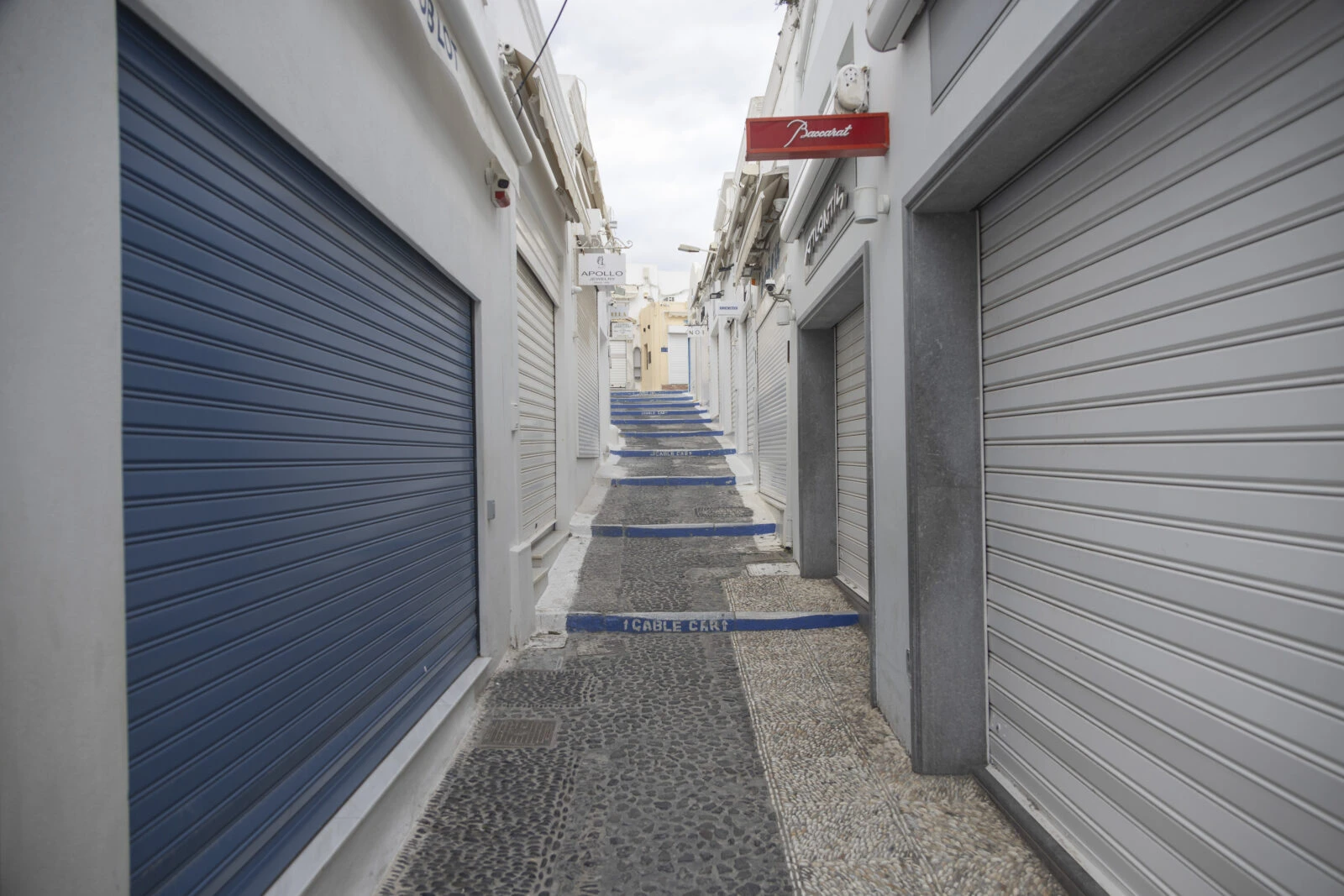
Greek authorities and scientists are closely monitoring the situation, using advanced technology to assess risks and implement safety measures.


